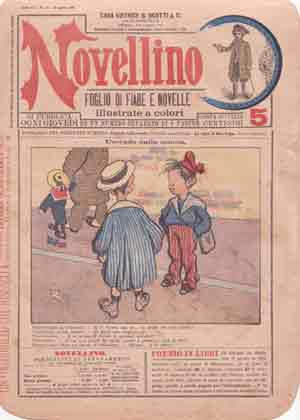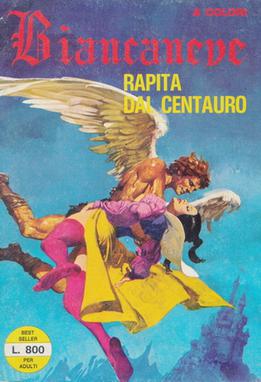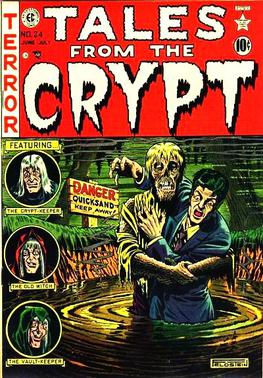Related Research Articles

Maurilio Manara, known professionally as Milo Manara, is an Italian comic book writer and artist.

Italian comics, also known as fumetto[fuˈmetto], plural form fumetti[fuˈmetti], are comics that originate in Italy. The most popular Italian comics have been translated into many languages. The term fumetto refers to the distinctive word balloons that contain the dialogue in comics.
Renzo Barbieri was an author and editor of Italian comics as well as the founder of the publishing house Edifumetto. In 1980 he wrote Il Manuale del Playboy, a textbook about where European playboys live, what cars they drive, and other lifestyle tips.

Biancaneve is an Italian erotic comic book, created in 1972 by Renzo Barbieri and Rubino Ventura and illustrated by Leone Frollo.

Sukia was a vampire-themed Italian comics series by Renzo Barbieri and Fulvio Bosttoli published by Edifumetto from 1978 to 1986, for a total of 153 albums and 6 extra albums. In the series Sukia faces people or creatures who are trying to do some form of harm to the world or other. Sukia is displayed as an antihero since she at times helps people fight crimes against humanity or committing crimes for personal gain. Each issue usually was self-contained.

Seiko Sports Association were one of the most popular and successful football teams in the history of football in Hong Kong. The team withdrew from the Hong Kong First Division League after the 1985–86 season.

Lucifera is an anti-heroine of the eponymous 1970s Italian comic book, published between 1971 and 1980 by Ediperiodici. The series, along with more well-known series of the era like Isabella and Goldrake, is among those created by Renzo Barbieri and Giorgio Cavedon, published between the late sixties and early seventies. The series led to the birth and development of the Italian erotic genre.

Renzo Montagnani was an Italian actor and voice actor.
Notable events of 1972 in comics. See also List of years in comics.
Renzo, the diminutive of Lorenzo, is an Italian masculine given name and a surname.

Horror comics are comic books, graphic novels, black-and-white comics magazines, and manga focusing on horror fiction. In the US market, horror comic books reached a peak in the late 1940s through the mid-1950s, when concern over content and the imposition of the self-censorship Comics Code Authority contributed to the demise of many titles and the toning down of others. Black-and-white horror-comics magazines, which did not fall under the Code, flourished from the mid-1960s through the early 1980s from a variety of publishers. Mainstream American color comic books experienced a horror resurgence in the 1970s, following a loosening of the Code. While the genre has had greater and lesser periods of popularity, it occupies a firm niche in comics as of the 2010s.
Magnus, pseudonym of Roberto Raviola, was an Italian comic book artist, regarded as one of the foremost cartoonists of all time in his country.

Maghella is an Italian comic book erotic character. A young witch with magic powers, she was created by Dino Leonetti with text by Furio Arrasich.

Zora is an Italian comic book erotic character from the 1970s. Zora la Vampira is one of many such characters from the Italian fumetti tradition. Other figures from the same era, and with similarly violent or erotic preoccupations, include Maghella, Lucifera, Biancaneve, Vartan, Jacula, Sukia, and Yra.
Yra the Vampire is the main character from the eponymous series of erotic comic books. She was drawn by Leone Frollo and Rubino Ventura. Her 12-episodes fumetti series, titled Yra, published from 1980 to 1981 in Italy by Edifumetto.
Alessandro Biffignandi was an Italian illustrator, mostly known for his covers for digest-sized, adult comics whose themes were sex, violence, and horror.

Emanuele Taglietti is an Italian illustrator, mostly known for his covers for digest-sized, adult comics whose themes were sex, violence, and horror.
Giorgio Cavedon was an Italian publisher, cartoonist and screenwriter. Cavedon was most associated with his adult comics he wrote with Renzo Barbieri. His first comic, Isabella was Italy's first openly erotic fumetto.
Wallestein the Monster was a central character in one of the pocket digests produced by the Italian publisher Edifumetto which appeared on Italian newsstands between 1972 and 1982. Wallestein's world was one in which the Gothic and the contemporary intertwined.
References
- 1 2 Castaldi, Simone. Drawn and Dangerous: Italian Comics of the 1970s and 1980s; University Press of Mississippi; 2012; ISBN 978-1617033254
- ↑ Sex And Horror - The Art of Alessandro Biffignandi, Korero Press, 2016, ISBN 9780993337406
- 1 2 Sex and Horror - The Art of Emanuele Taglietti, Korero Press, 2015, ISBN 9780957664944